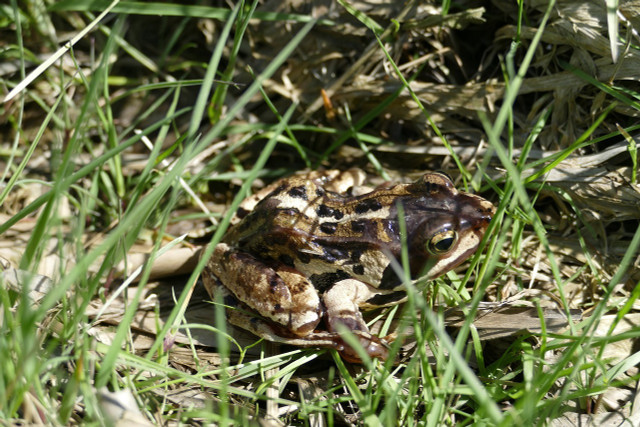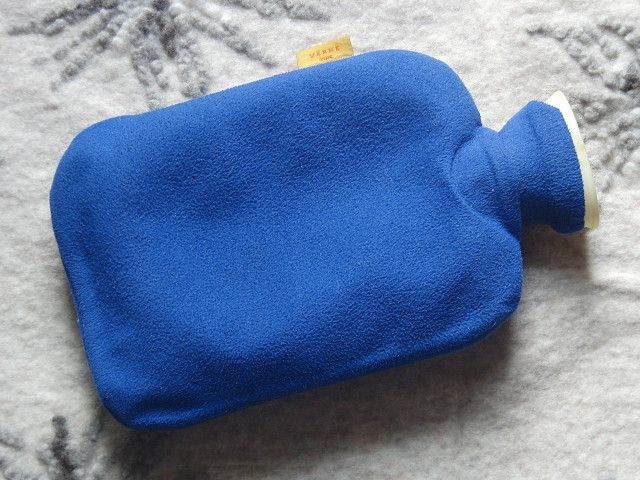
Moor pillows can retain heat for a long time and bring relief to many ailments. But what effect do the jet-black heat accumulators have on the environment?
Whether it’s back pain, sore muscles or abdominal pain – soothing warmth can often help to relieve cramp-like symptoms and tension. If you treat a painful area with heat, the blood circulation in the skin is stimulated and the blood flows more slowly through the vessels. This improves the supply of oxygen and nutrients to the cells.
In the past, hot-water bottles were a must-have in every medicine cabinet, but this traditional household remedy has one major disadvantage: it doesn’t retain heat for very long.
As an alternative, there are moor cushions. The eponymous organic product is pressed into plastic covers, which you can find in medical supply stores and online shops in various sizes and shapes – depending on which part of the body you want to treat with heat. Some of the heat-generating pads are also available with Velcro straps so that you can fix them in a targeted manner.
However, moor pillows are by no means a sustainable variant, despite all the heat output and storage capacity. Because they have a negative effect on the environment.
The biggest advantage of bog cushions

(Photo: CC0 / Pixabay / Tumisu)
With their ability to store heat, moor pillows are better suited for deep heat treatment than hot-water bottles or products with other fillings. In the case of chronic joint pain or other permanent ailments in particular, treatment with prolonged heat may be the more appropriate means of relief.
In addition, moor pillows can also be used for cold therapy: an advantage that should not be underestimated in the case of sports injuries or swelling that do not require heat treatment, but the exact opposite.
How useful are moor cushions?
Like moor baths, moor pillows also contain the eponymous moor. However, it is not the moor itself – because moors are the corresponding landscapes – but the degradation product peat. With nutrients such as magnesium, calcium and iron, peat contains some health-promoting components.
But how much do these ingredients help when they are pressed into thick-walled plastic covers, as in the case of moor pillows? As already mentioned, the heat can relieve cramps and tension. In contrast to mud baths, the skin does not absorb any valuable nutrients from the thickly wrapped mud pillows. With the trace element copper and the humic acid contained in peat, there are only two anti-inflammatory substances to be mentioned that are eliminated when using the moor pillow and cannot be absorbed by the body.
Why moor cushions are harmful to the environment

(Photo: CC0 / Pixabay / SZier)
The extraction of peat usually goes hand in hand with the draining of the moors, which represents a major problem from an ecological point of view. As the Nature Conservation Union (NABU) reports, moorland not only contributes to the preservation of biodiversity, but also plays another role – as a carbon store. Because in the wet areas, plant remains are not completely decomposed in the absence of oxygen, and carbon is also bound in the moor with the settled organic material.
Considering that peatlands have been forming for thousands of years, considerable carbon reserves have developed with them. While peatlands occupy only three percent of the world’s land area, they hold a third of the earth’s carbon—twice the value of all forests on the planet.
Nevertheless, moors are drained to this day in order to develop them for agriculture and forestry – although this practice is controversial. Because when draining, the carbon oxidizes and it’s not just CO2but also nitrous oxide (NO2) released. The latter is even three hundred times more harmful to the climate than CO2.
The production of moor cushions contributes to the gradual degradation of these ecologically valuable areas. There are manufacturers who claim to only use moor from renaturation projects, i.e. from areas whose natural state is to be restored. But there are more environmentally friendly alternatives.
More environmentally friendly alternatives to the moor pillow

(Photo: CC0 / Pixabay / alsterkoralle)
If you don’t want to do without the beneficial effect of a heat pillow, there are a few ecologically safer alternatives to the moor pillow:
-
Hot-water bottle: The old household remedy is not as flexible and does not keep the heat as long as a moor pillow, but it is cheap and easy to use. Simply heat and fill with water. The hot-water bottle is always sufficient for slight abdominal pain. But beware: toasted skin syndrome: beware of hot water bottles and heating pads.
-
Cherry pit pillow: Since cherry pits are comparatively voluminous, it is not very comfortable to lie on them if you suffer from back pain. Due to their size, however, the fruit stones are suitable for larger heat packs, which is helpful if pain radiates further. In addition, cherry stone pillows are very light.
-
Spelled pillows: Fillings with spelled have a decisive advantage over cherry stones – they keep the heat longer. Because their compact size results in a denser mass. In addition, spelled kernels are breathable and can regulate moisture better.
You can see that there are two environmentally friendly alternatives to moor pillows, especially cherry and spelled pillows. Especially since these, with their fabric covers, are more durable and repairable than plastic moor cushions, which can tear or become porous. If you would like to be even more sustainable with the variants mentioned, make sure that the fillings can be heated in the microwave and do not necessarily have to be heated in the oven. In this way, you not only protect the ecologically valuable moors, but can also save electricity.
Read more on Techzle.com:
- Moor: The importance of the moor for the climate
- Swamp: That’s how important wetlands are to nature
- Red mud: That’s how problematic it is for the environment